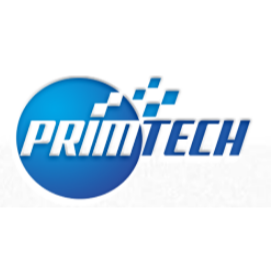Precision technology assistance: the future and application of wafer calibrators
In the modern semiconductor manufacturing industry, the role of wafer calibrators cannot be underestimated. With the rapid development of technology, wafer calibrators have become one of the key tools to ensure efficient operation and product quality of semiconductor equipment. This article will delve into the working principle, types, and applications of wafer calibrators in various fields, and look forward to future development trends.
1、 Basic concepts of wafer calibrator
Wafer calibrator, as the name suggests, is a device used for calibrating and measuring wafer size, shape, and various parameters. Its main purpose is to ensure the accuracy and quality of wafers in the semiconductor manufacturing process, thereby improving the reliability of the final product. The wafer calibrator can detect the diameter, thickness, flatness, and spacing between different material layers of the wafer.
At various stages of semiconductor manufacturing, from wafer production, cutting, to packaging and testing, wafer calibrators are required. With the improvement of process requirements, the size of wafers is becoming smaller and the precision requirements are increasing. Therefore, precision wafer calibrators have become essential equipment.
2、 Working principle of wafer calibrator
Wafer calibrators typically use various techniques such as optics, laser, ultrasound, etc. for measurement and calibration. The core principles mainly include the following points:
1. Optical measurement: Using optical instruments to scan the surface of a wafer, and accurately calculating the thickness, diameter, and shape of the wafer through signals reflected by lasers or light sources. Optical measurement technology has the advantages of speed and non-contact, and is suitable for high-precision requirements.
2. Laser interference: By using a laser interferometer to measure wafers, sub micron level accuracy can be achieved. This measurement method is suitable for semiconductor products that require extremely high precision, especially in the manufacturing of micro nano structures in chips.
3. Ultrasonic measurement: Ultrasonic technology is mainly used to detect defects inside wafers, such as dents or bubbles. When ultrasound passes through a wafer, it is affected by the material density and structure, which in turn determines its internal quality.
4. Resistance testing: For certain special types of wafers, resistance testing may be required to confirm their conductivity and other electrical characteristics to ensure their performance in the circuit meets standards.
By combining various measurement methods mentioned above, the wafer calibrator can provide comprehensive and accurate wafer data, laying a solid foundation for subsequent processing and applications.
3、 Types of wafer calibrators
According to different application requirements, wafer calibrators can be divided into various types:
1. Automatic wafer calibrator: widely used in large-scale production lines, it can automatically complete measurement and calibration in a short period of time, reduce human error, and improve production efficiency.
2. Handheld wafer calibrator: This device is usually small and portable, suitable for rapid on-site inspection and calibration, and is commonly used in wafer storage, outbound inspection, and other processes.
3. Multi functional wafer calibrator: It has multiple measurement functions and can simultaneously test multiple parameters of wafers to meet the needs of different fields, such as electronics, optoelectronics, medical, etc.
4. Special wafer calibrator: Design unique calibrators for specific industries or applications, such as precision calibrators for quantum computing chips.
4、 The application of wafer calibrators in the semiconductor industry
The application of wafer calibrators in the semiconductor field is very extensive, mainly reflected in the following aspects:
1. Wafer production
In the production process of wafers, calibrators are used to check whether the produced wafers meet the design standards. By measuring wafer characteristics such as thickness, diameter, etc., the quality of each wafer is ensured, thereby improving the overall yield rate.
2. Packaging testing
Packaging is an important step in semiconductor manufacturing. The wafer calibrator can be used to detect the size and corresponding electrical characteristics of the packaged wafer, ensuring stable performance of the product in final use.
3. Regular maintenance
In the daily maintenance of semiconductor production equipment, wafer calibrators can effectively monitor equipment accuracy and working status, ensuring long-term stable operation of the equipment. Regular calibration and inspection can significantly reduce losses caused by equipment failures.
4. New technology research and development
With the continuous emergence of new materials and technologies, the application of wafer calibrators is gradually expanding. For example, in the research of new semiconductor materials such as carbon nanotubes and graphene, accurate calibration is particularly important, which provides strong support for related scientific research.
5、 Future Development Trends
With the rapid development of semiconductor technology, the demand and technical requirements for wafer calibrators are also constantly increasing. Here are some development trends for future wafer calibrators:
1. High precision and high speed
Future wafer calibrators will place greater emphasis on measurement accuracy and speed, especially in large-scale production environments where higher requirements will be placed on calibrators. Realizing sub nanometer level measurement accuracy will be the key to a new round of technological revolution.
2. Intelligence and automation
With the development of artificial intelligence technology, wafer calibrators will gradually become intelligent, using machine learning algorithms to continuously optimize the measurement process and improve efficiency. In addition, more devices will be automated to reduce human error.
3. Innovation in Materials and Technology
The emergence of new materials will drive the improvement of wafer calibrator technology, such as in the fields of superconducting materials and quantum computing, where higher requirements are placed on measurement accuracy and stability.
4. Environmental Protection and Sustainable Development
In the manufacturing process, wafer calibrators will also pay more attention to environmental protection, developing more energy-efficient and low emission equipment to meet global requirements for sustainable development.
epilogue
Wafer calibrators play a crucial role in the semiconductor industry, and with the continuous advancement of industry technology, the technical level of wafer calibrators is also constantly improving. Accurate measurement technology not only ensures the quality of semiconductor products, but also provides a continuous driving force for future technological development. Through the combination of continuous technological innovation and market demand, wafer calibrators will undoubtedly occupy a more important position in the future of semiconductor manufacturing.






Please first Loginlater ~